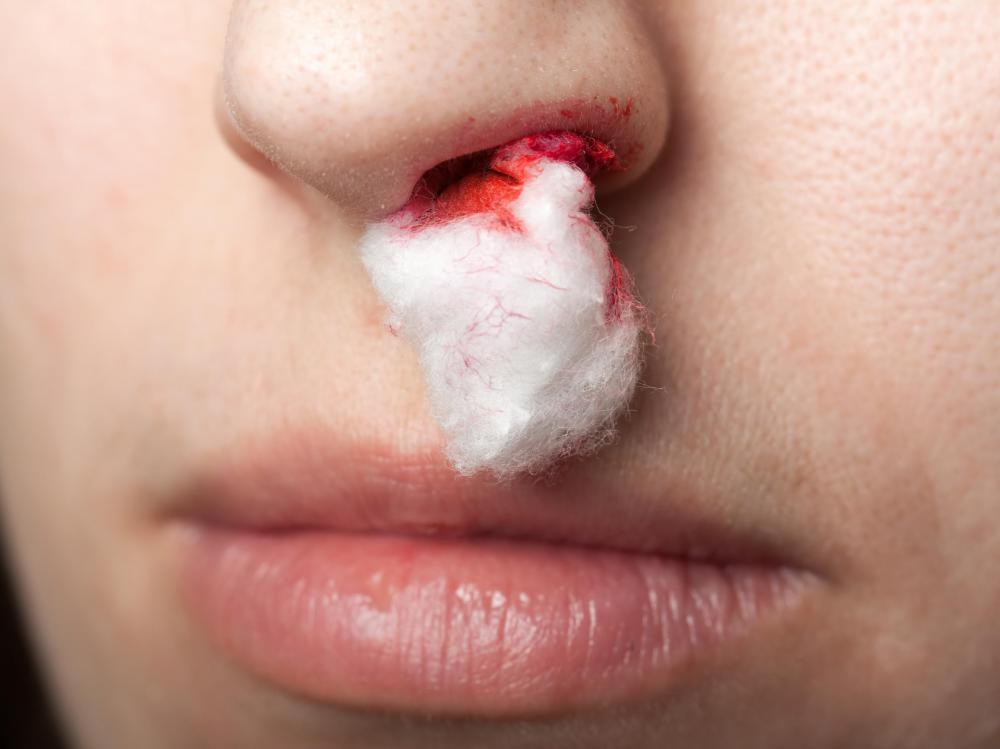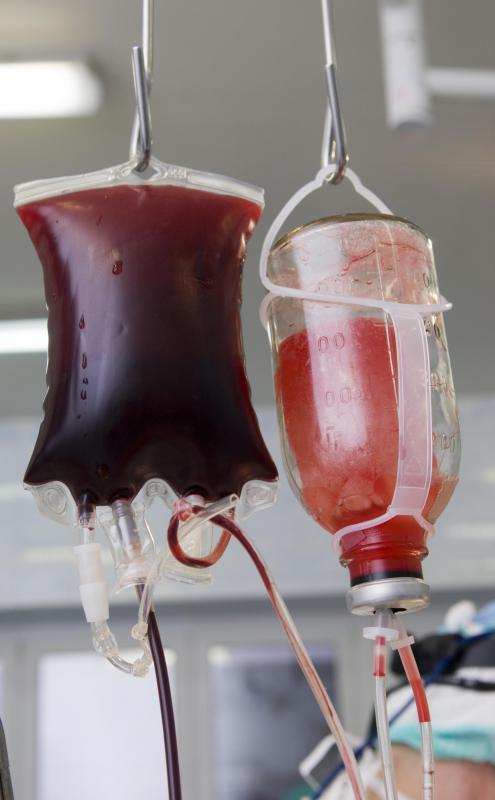At TheHealthBoard, we're committed to delivering accurate, trustworthy information. Our expert-authored content is rigorously fact-checked and sourced from credible authorities. Discover how we uphold the highest standards in providing you with reliable knowledge.
What is Coagulation?
Coagulation is the means by which we stop bleeding (hemostasis) and form blood clots after injury to blood vessels. Essentially, coagulation is clotting of the blood, an extremely important process. How our bodies coagulate blood has been a matter of intensive study, since some people with certain diseases like hemophilia are unable to do so. Understanding when coagulation is more hurtful than harmful, such as when a blood clot causes a stroke, has increased our understanding of the value of this process and when it might be necessary to arrest it.
You can describe blood clotting in the simplest terms as a system of several parts that is initiated by the damage of a blood vessel. The first thing that occurs during coagulation is constriction. Constriction shrinks the injured blood vessel causing it to move blood at a much slower rate. This translates to less bleeding.

Secondly, platelets, an important part of blood, gather at the injury site to form a platelet plug. These platelets tend to be signaled by a release of proteins that give the forward march order for platelets to congregate at the injury site. Yet, the platelet plug is only a temporary fix. More is needed to keep the platelet plug in place.
The body has proteins, more than 20 types, which then move to the site of the injury to help strengthen the platelet plug. A final protein, thrombin, forms a meshlike protection for the platelet plug, essentially finishing the clotting process. This mesh is called fibrin mesh, and acts like a reinforcement for the platelets, holding them in place and ultimately keeping the blood clotted.

The fibrin mesh actually gets stronger as the wound gets older, usually healing the wound completely. The scabs from wounds for example are part blood, part platelet and part fibrin mesh. Proteins that help the blood clot do interact with air when the wound is external, helping to harden and strengthen a scab. Once the clotting process is over, the scab will gradually become useless and fall off. Picking the scab can restart coagulation if the blood vessels are not fully healed.

We know a great deal about coagulation because the presence of too many platelets, or too much of certain types of proteins can cause blood clots to form when they shouldn’t. In some cases, narrowed arteries can cause platelets to become stuck together and clot, resulting in stroke. When people have heart surgeries, the danger of blood clotting is high, and people are frequently given medications called anticoagulants to stop blood from clotting at a fast rate. They do work on the whole body, and people taking them may have an arrested process of clotting when they get bruised or cut.

Other people lack some of the proteins needed for the body to complete the coagulation process. The absence of these proteins can be extremely dangerous, and even small injuries can result in significant blood loss. People can also lack appropriate amounts of platelets, which is a condition called thrombocytopenia. This can be transient, and may occur when people undergo cancer treatment. Occasionally, the clotting process is significantly impaired by anticoagulants like warfarin and heparin and the result is induced thrombocytopenia. Again, this poses great risk for the person with the condition, but may be corrected with transfusions of platelets.
AS FEATURED ON:
AS FEATURED ON:

















Discussion Comments
People know that they can donate blood, but you might not know you can actually donate platelets. When my mom was having chemo, she got donated platelets to help her blood clot. It was better for her because the chemo weakened her immune system, and getting platelets from just one person meant she didn't have to get blood from a lot of different people. Now I donate regularly myself. The people at the Red Cross put a movie on for me and I just relax.
Post your comments